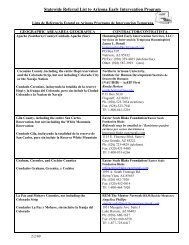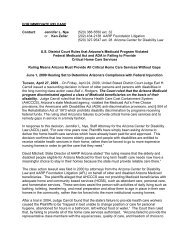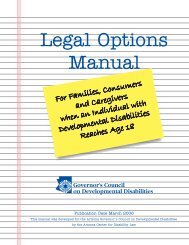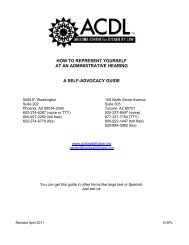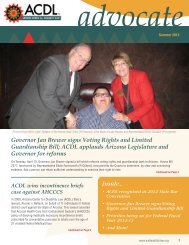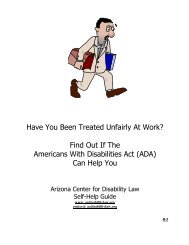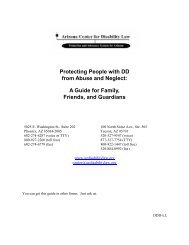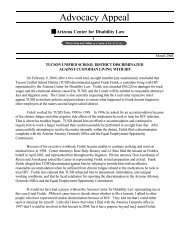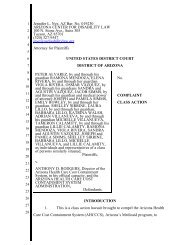How to Enforce Employment Rights Under the Americans with ...
How to Enforce Employment Rights Under the Americans with ...
How to Enforce Employment Rights Under the Americans with ...
You also want an ePaper? Increase the reach of your titles
YUMPU automatically turns print PDFs into web optimized ePapers that Google loves.
A. Introduction <strong>to</strong> The <strong>Americans</strong> With Disabilities Act (ADA) And ThisGuide1. OverviewOftentimes, people <strong>with</strong> disabilities do not have an equal opportunity <strong>to</strong> work or advance in<strong>the</strong>ir employment. People <strong>with</strong> disabilities are often restricted in employment opportunities bymany different kinds of barriers. Some face physical obstacles that ei<strong>the</strong>r make it difficult orimpossible <strong>to</strong> get in<strong>to</strong> and around a workplace or <strong>to</strong> use equipment. Some are excluded because<strong>the</strong>y communicate differently than <strong>the</strong>ir co-workers. Still o<strong>the</strong>rs are excluded because of rigidwork schedules that do not permit flexibility for people <strong>with</strong> special needs because of a disability.In o<strong>the</strong>r cases, people are denied opportunities, not because of actual barriers, but becauseof prejudice. These are <strong>the</strong> barriers in o<strong>the</strong>r people's minds: fears, stereotypes, presumptions, andmisconceptions about job performance, safety, absenteeism, costs, or lack of acceptance by coworkersand cus<strong>to</strong>mers.On July 26, 1990, Congress passed <strong>the</strong> <strong>Americans</strong> <strong>with</strong> Disabilities Act (ADA), whichprovides major civil rights protections <strong>to</strong> individuals <strong>with</strong> disabilities. The intent of this federallaw is <strong>to</strong> reduce barriers <strong>to</strong> people <strong>with</strong> disabilities and provide equal opportunities in employment,public accommodations, public services, transportation, and telecommunications. The varioustitles of <strong>the</strong> ADA affect many aspects of <strong>the</strong> lives of people <strong>with</strong> disabilities. Title I makes it unlawful <strong>to</strong> discriminate in employment against qualified people<strong>with</strong> disabilities. Title II makes it unlawful for state and local governments and <strong>the</strong>ir agencies <strong>to</strong>discriminate on <strong>the</strong> basis of disability in programs and services, including publictransportation. Title III prohibits discrimination on <strong>the</strong> basis of disability in access and enjoymen<strong>to</strong>f public accommodations and commercial facilities, such as hotels, motels,restaurants, professional offices, convention centers, s<strong>to</strong>res, banks, museums, parks,schools, and recreational facilities. Title IV requires accessibility of telecommunication services <strong>to</strong> hearing impairedpersons and o<strong>the</strong>r individuals <strong>with</strong> disabilities.1




